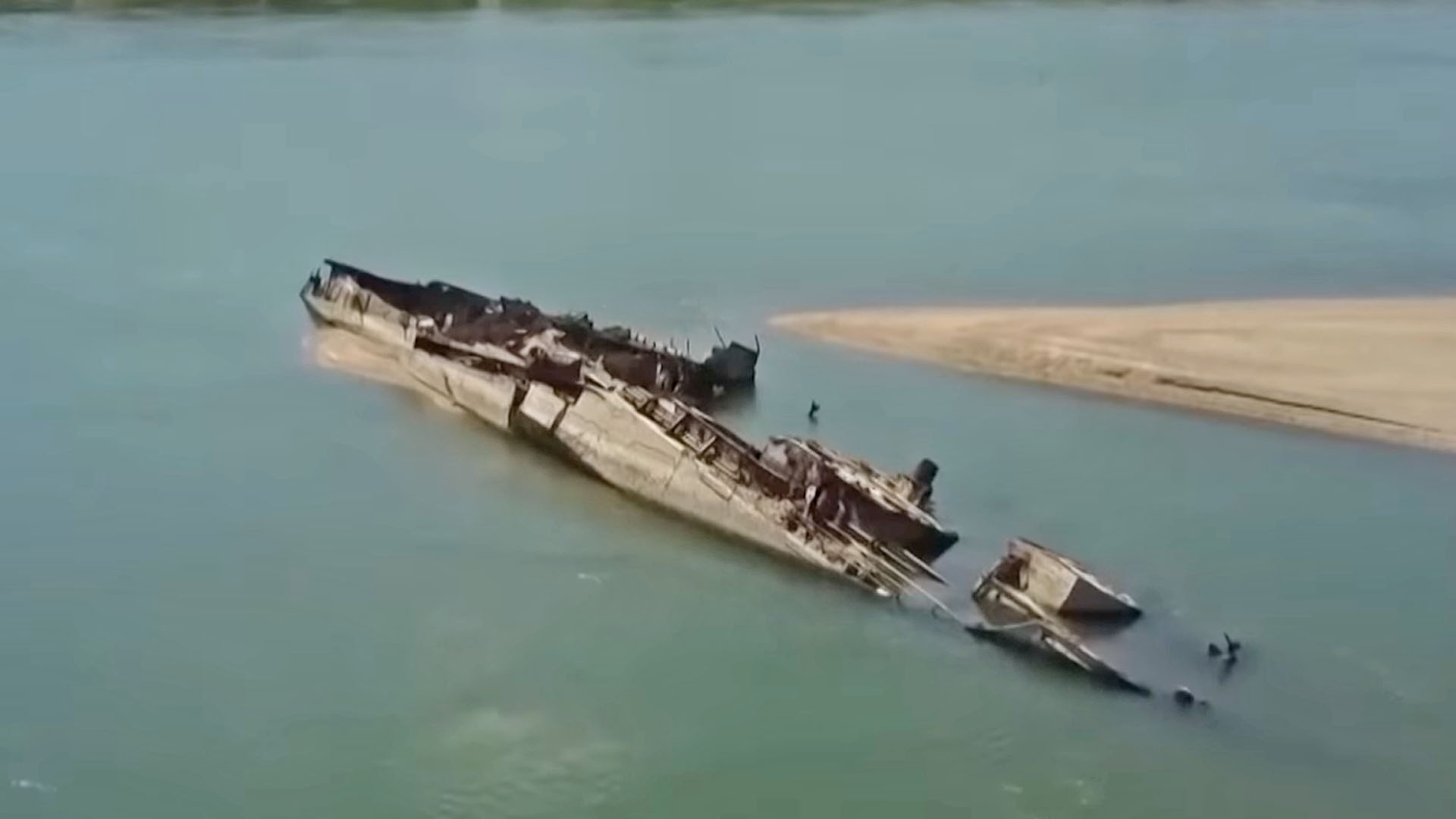

Ships from Germany’s WWII-era Black Sea fleet are rising from the depths of the Danube River due to record-low water levels. More than 20 vessels are visible above the surface of the river near Prahovo, Serbia. Many of the ships reportedly still contain several tons of ammunition and explosives, which locals say are a hazard to public safety.
The Danube is navigable all the way from Germany to the Black Sea. Many of the ships were scuttled in the river near the end of the war during an Axis retreat from Soviet forces. This was apparently done intentionally to prevent the ships from falling into the hands of the allies as well as to disrupt traffic along the Danube. The latter part of the plan still affects shipping today; some of the wrecks must be avoided during low water levels, though it’s unusual to see them above the surface.
The wrecks are narrowing shipping lanes in the area, with some now as narrow as 330 feet. Reuters reports that the Serbian government looked into removing the hulks as far back as March, and other outlets claim the Serbian government plans to remove the ships as soon as October. The ships visible now are also only a fraction of those scuttled in the Danube as it’s estimated there are hundreds of vessels in various conditions peppering the riverbed.

Droughts are also causing history to resurface in the United States. Recently, a WWII-era landing craft rose from the depths of the dangerously low Lake Mead. The reservoir is hiding more history than that, as well. A PBY Catalina flying boat and a Boeing B-29 Super Fortress both lie below the depths of the lake, although water levels would have to reach more critical levels before they emerge.
Seismic activity even pushed relics from WWII above the surface of the Pacific Ocean last year off of Iwo Jima, now known as Iō Tō. This wasn’t drought-related, of course, but the remains of an improvised breakwater are an impressive and surprisingly well-documented sight.
Got a tip or question for the author? You can reach them here: peter@thedrive.com